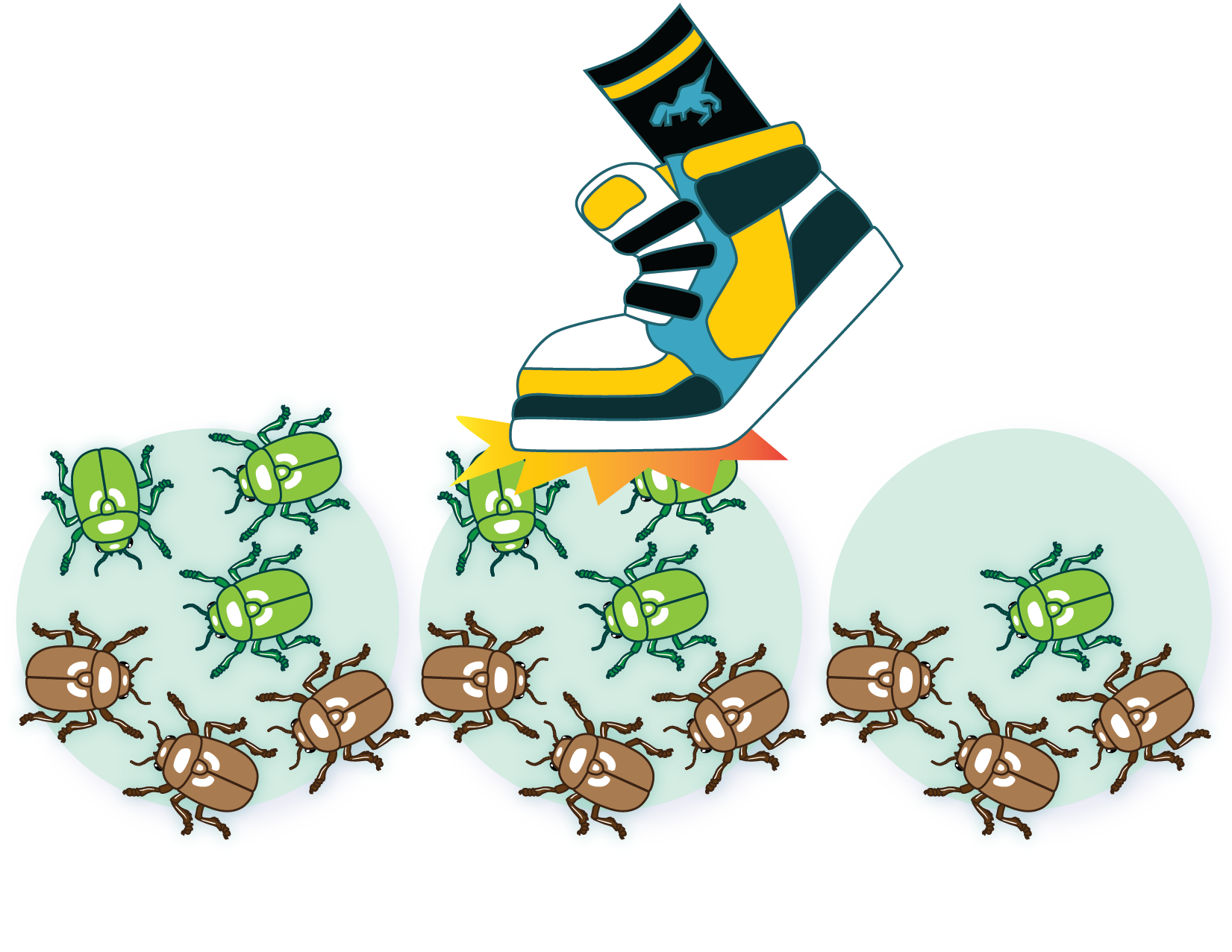2.12 Mechanisms of Evolution: Genetic Drift
What is drift?
Genetic drift, or simply drift, occurs when a population experiences random fluctuations in frequencies of genetic traits. The term “random” is key to an understanding of drift. If heritable variation and differential reproductive success lead to higher frequencies of beneficial traits in a population, natural selection has occurred. In contrast, drift has occurred if changes in trait frequencies are unrelated to the reproductive value of individuals’ traits. Drift tends to reduce genetic variation because it can cause gene variants to be lost.
Sometimes, as a result of chance events, a random set of individuals does not reproduce and the population evolves as a result of drift. While natural selection results from aspects of an organism’s environment exerting “selective pressure” on the individual (e.g., a desert environment favors the water-storing humps of a camel), drift, by definition, is not a result of environmental pressures. It is simply a result of randomness (Figure 2.15).
Drift is especially influential in small populations, such as populations living on small islands or other isolated habitats, or those that remain after large-scale disruptions (e.g. earthquakes, fire). For example, the random loss of 20 iguanas from a population of 1 million iguanas will not cause a large change in trait frequencies. In contrast, the random loss of 20 iguanas from a population of 100 iguanas will likely cause a large change in trait frequencies.

The Founder Effect
One scenario in which drift plays a large role is the founder effect, which results when a few individuals of a population (the “founders”) move to a new location. The low genetic variation within the small group of founders population means that the new population is different from the original population. For example, Ellis-van Creveld Syndrome (a form of dwarfism that involves short stature, extra fingers or toes, and possible heart defects) is rare in large populations. In contrast, this syndrome is common in the Pennsylvania Amish population in the United States because of drift—specifically, because of the founder effect. This Amish population was founded relatively recently by a few individuals who presumably had gene variants that make Ellis-van Creveld Syndrome more likely. The Pennsylvania Amish population has since grown, but has not been subject to the diversifying effects of gene flow (that is, individuals rarely enter the population from another population) and there has not been enough time for natural selection to significantly influence the frequencies of these gene variants. Therefore the current population has this syndrome in much higher frequency than the population from which they migrated.
The Bottleneck Effect
A second scenario in which drift is influential is in the bottleneck effect. In the bottleneck effect, a large population becomes small, and then rebounds back to a larger size. This “bottleneck” in population size might occur because of a natural disaster, like a fire that kills a large percentage of the population, or from another event that kills many individuals. For example, Northern elephant seals experienced a population bottleneck in the 1890s when hunting by humans caused their population size to plummet to only 20 individuals. The population size has since grown to 30,000 individuals. However, the genetic variation in the population is very low because of the bottleneck. There has not been enough time for mutation to generate new variation since the dramatic drop in variation in the 1890s.
Ask Yourself
Content on this page was originally published in The Evolution and Biology of Sex by Sehoya Cotner & Deena Wassenberg and has been expanded and updated by Katherine Furniss & Sarah Hammarlund in compliance with the original CC-BY-NC 4.0 license.
- Image from UC Museum of Paleontology Understanding Evolution, www.understandingevolution.org under a CC-BY-NC-SA 4.0 license. ↵

